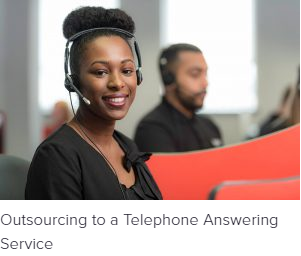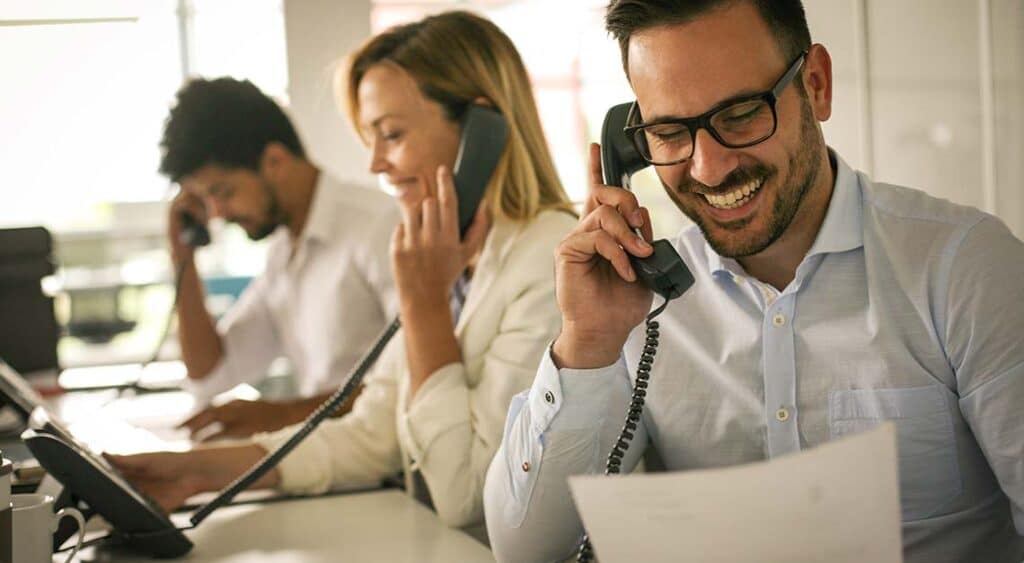All Categories
Featured
Table of Contents
- – What Is The Best What Is The Difference Between...
- – What's The Best Virtual Receptionist (Live Pho...
- – What Is The Best What Are Call Answering Servi...
- – What Is The Best How To Start An Answering Se...
- – What Is The Best Telephone Answering Services...
- – What Is The Best Answering Service Faqs - Qu...
What Is The Best What Is The Difference Between An Answering Service And ... Service?
This device and its successors were developed by Sava Jacobson, an electrical engineer with a personal consulting service. While early voice mail utilized magnetic tape innovation, many contemporary equipment uses strong state memory storage; some gadgets use a mix of both, with a solid-state circuit for the outbound message and a cassette for the incoming messages.
"toll conserving" listed below) (answer phone service). This is useful if the owner is evaluating calls and does not want to consult with all callers. In any case after going, the calling party needs to be informed about the call having actually been answered (in many cases this starts the charging), either by some remark of the operator, or by some welcoming message of the little, or addressed to non-human callers (e.
This holds specifically for the TADs with digitally saved welcoming messages or for earlier machines (prior to the increase of microcassettes) with a special limitless loop tape, separate from a 2nd cassette, committed to recording. There have been answer-only gadgets without any recording capabilities, where the welcoming message had to inform callers of a state of current unattainability, or e (virtual telephone answering).
What's The Best Virtual Receptionist (Live Phone Answering Service)

about schedule hours. In taping Littles the welcoming usually consists of an invitation to leave a message "after the beep". A voice mail that utilizes a microcassette to tape messages On a dual-cassette answerphone, there is an outgoing cassette, which after the defined number of rings plays a pre-recorded message to the caller.

Single-cassette voice mail contain the outgoing message at the beginning of the tape and incoming messages on the staying space. They initially play the announcement, then fast-forward to the next available area for recording, then record the caller's message. If there are lots of previous messages, fast-forwarding through them can trigger a significant delay.
This beep is frequently described in the greeting message, requesting that the caller leave a message "after the beep". Littles with digital storage for the recorded messages do not reveal this hold-up, naturally. A little might offer a remote control facility, whereby the answerphone owner can sound the house number and, by getting in a code on the remote telephone's keypad, can listen to tape-recorded messages, or delete them, even when far from home.
What Is The Best What Are Call Answering Services? - Explained Available

Therefore the device increases the variety of rings after which it responds to the call (usually by 2, leading to 4 rings), if no unread messages are presently stored, however responses after the set variety of rings (generally 2) if there are unread messages. This permits the owner to discover whether there are messages waiting; if there are none, the owner can hang up the phone on the, e.
Some devices also allow themselves to be remotely triggered, if they have actually been turned off, by calling and letting the phone ring a specific big number of times (normally 10-15). Some provider abandon calls currently after a smaller number of rings, making remote activation difficult. In the early days of TADs an unique transmitter for DTMF tones (dual-tone multi-frequency signalling) was regionally required for remote control, given that the formerly utilized pulse dialling is not apt to convey appropriate signalling along an active connection, and the dual-tone multi-frequency signalling was implemented step-by-step.
Any incoming call is not recognizable with respect to these residential or commercial properties in advance of going "off hook" by the terminal equipment. So after going off hook the calls must be changed to proper devices and just the voice-type is instantly accessible to a human, but possibly, nevertheless should be routed to a TAD (e.
What Is The Best How To Start An Answering Service Business Out Right Now
What if I told you that you do not have to really select up your gadget when responding to a customer call? Another person will. So practical, ideal? Addressing call doesn't require someone to be on the other end of the line. Effective automated phone systems can do the technique just as effectively as a live agent and sometimes even much better.
An automatic answering service or interactive voice response system is a phone system that interacts with callers without a live person on the line - business call answering service. When companies use this technology, clients can get the answer to a concern about your service just by using interactions established on a pre-programmed call flow.
Although live operators update the customer service experience, lots of calls do not require human interaction. An easy documented message or directions on how a client can obtain a piece of info usually fixes a caller's immediate requirement - virtual telephone answering service. Automated answering services are a basic and reliable way to direct inbound calls to the best individual.
What Is The Best Telephone Answering Services Company
Notification that when you call a company, either for assistance or item query, the first thing you will hear is a pre-recorded voice welcoming and a series of options like press 1 for customer service, press 2 for inquiries, and so on. The pre-recorded alternatives branch off to other choices depending upon the client's choice.
The phone tree system helps direct callers to the best individual or department using the keypad on a mobile phone. In some instances, callers can utilize their voices. It's worth noting that auto-attendant alternatives aren't restricted to the ten numbers on a phone's keypad. As soon as the caller has actually picked their very first choice, you can develop a multi-level auto-attendant that utilizes sub-menus to direct the caller to the right kind of help.
The caller does not need to interact with an individual if the auto-attendant phone system can manage their issue. The automated service can route callers to a staff member if they reach a "dead end" and require support from a live agent. It is costly to hire an operator or executive assistant.
What Is The Best Answering Service Faqs - Questions & Answers Company
Automated answering services, on the other hand, are significantly more economical and supply considerable cost savings at approximately $200-$420/month. Even if you do not have committed personnel to handle call routing and management, an automatic answering service improves performance by enabling your team to concentrate on their strengths so they can more effectively spend their time on the phone.
A sales lead routed to consumer service is a lost shot. If a consumer who has item questions reaches the incorrect department or receives insufficient answers from well-meaning workers who are less trained to handle a particular type of question, it can be a cause of disappointment and dissatisfaction. An automated answering system can decrease the number of misrouted calls, therefore assisting your workers make much better use of their phone time while maximizing time in their calendar for other tasks.
With Automated Answering Systems, you can produce a customized experience for both your personnel and your callers. Make a recording of your primary greeting, and simply update it routinely to reflect what is going on in your organization. You can develop as lots of departments or menu options as you desire.
Table of Contents
- – What Is The Best What Is The Difference Between...
- – What's The Best Virtual Receptionist (Live Pho...
- – What Is The Best What Are Call Answering Servi...
- – What Is The Best How To Start An Answering Se...
- – What Is The Best Telephone Answering Services...
- – What Is The Best Answering Service Faqs - Qu...
Latest Posts
Preferred Business Answering Service ( Australia)
Fast Live Answering Service Near Me – Albury
Affordable Answering Service
More
Latest Posts
Preferred Business Answering Service ( Australia)
Fast Live Answering Service Near Me – Albury
Affordable Answering Service